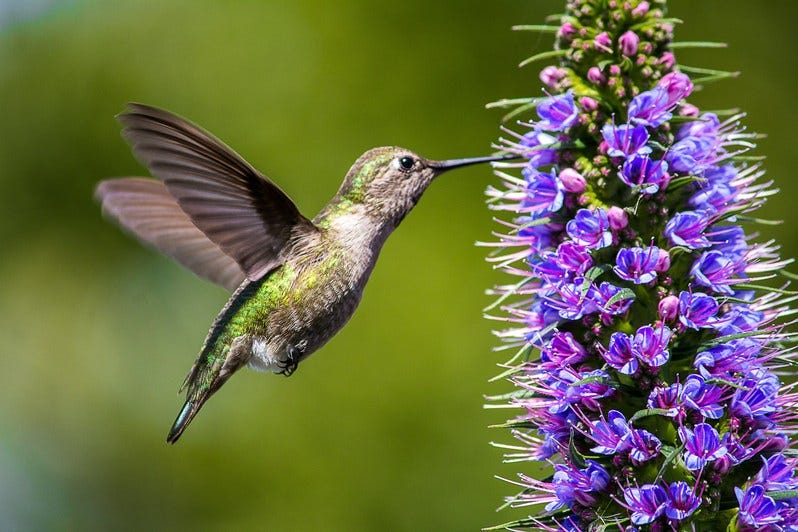Hummingbird Gardens
Welcome hummingbirds to your garden, and give them a reason to return again and again.
Hummingbirds are found throughout the Americas. If you live in North or South America you may have seen them in your home garden already. If you haven't had one of these visitors in your yard, you probably don't have the right plants for them to feed from. Hummingbirds are very territorial. Once they find a garden that is to their liking, they will return everyday.
Importance to American culture
Hummingbirds are highly regarded by the indigenous population of the Americas. Particularly in Central America and sub-tropical areas of North and South America. One of the most prominent peaks in the Santa Cruz Mountains of California is named Mt. Umunhum. Umunhum is from the Awaswas language of the Ohlone peoples, meaning "Resting Place of the Hummingbird". The Aztec god of war Huitzilopochtli used a hummingbird as their spirit animal. Aztecs also believed that fallen warriors would be reincarnated as hummingbirds. Pre-historic inhabitants of modern day Peru carved a giant outline in the ground of a hummingbird as part of the famous Nazca Lines, found in the Desert of southern Peru.
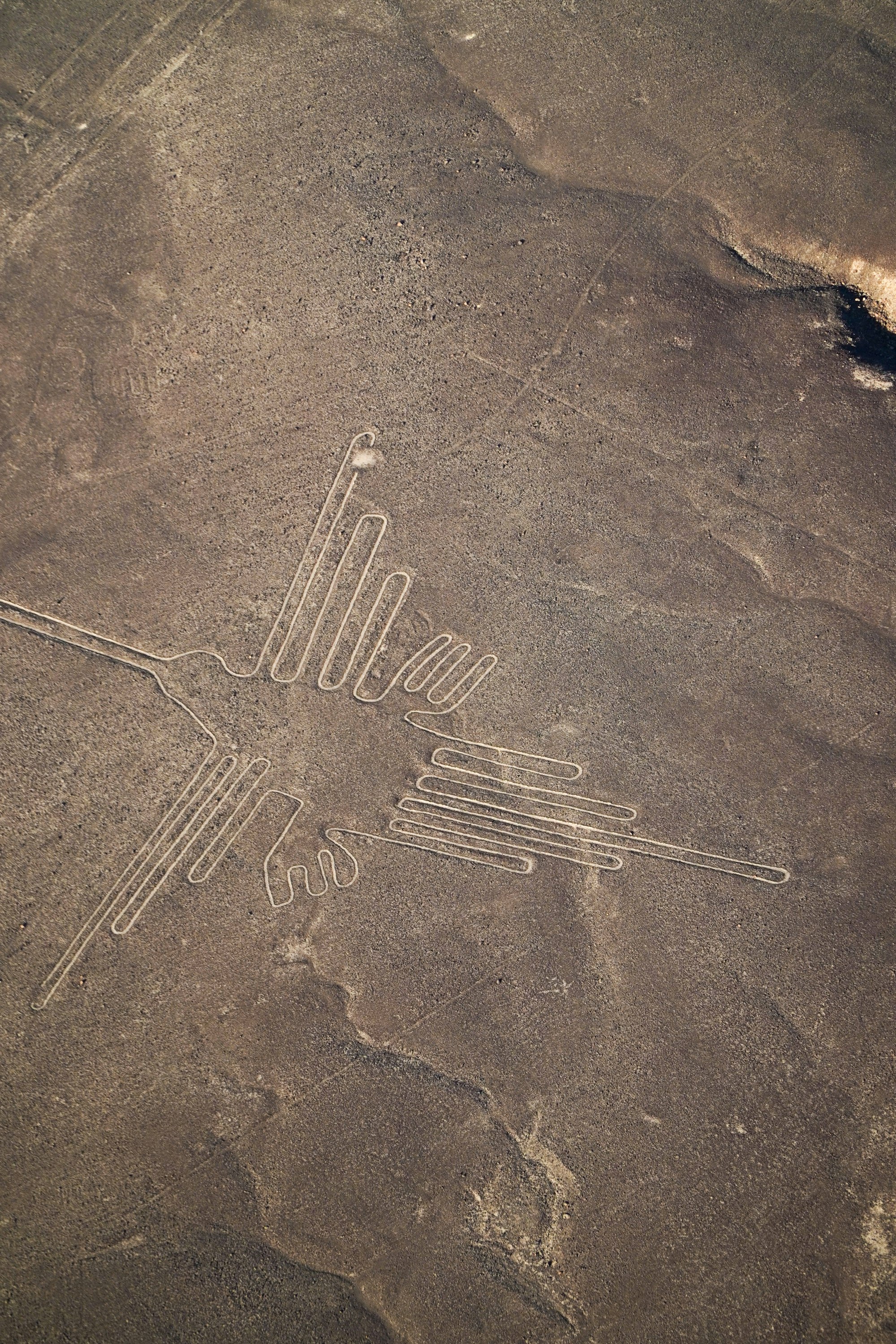
Plants for Hummingbirds
Hummingbirds eyes are very sensitive to warm colors (yellow/red), with cooler colors muted in their view. They also have a long thin beak and a long tongue that can allow them to reach into long narrow spaces. These two factors are why they tend to be most attracted to Red tubular flowers. They are easy to identify (red contrasts strongly against green foliage). The narrow openings leading to the flower's nectar is unreachable by most other wildlife.
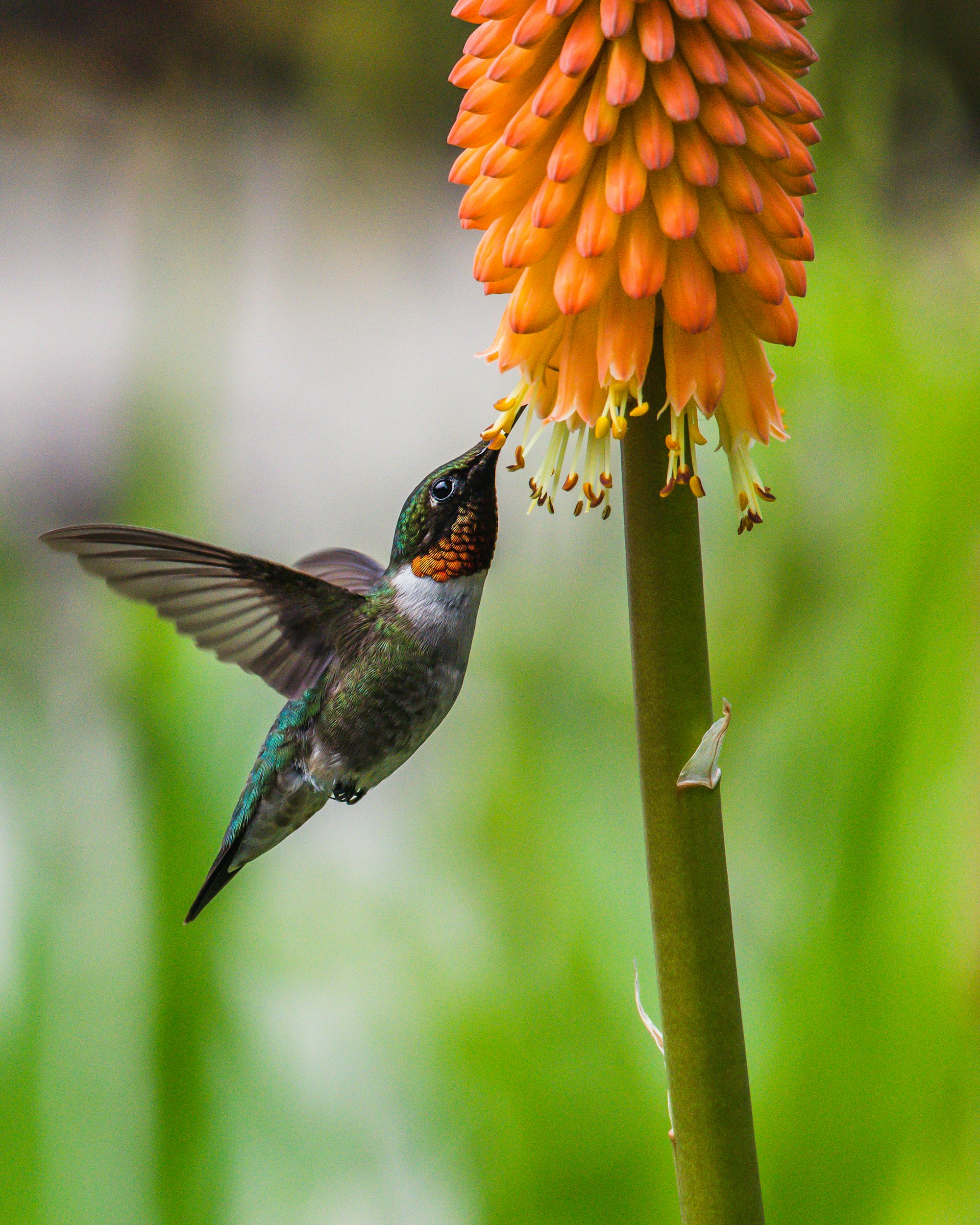
The other consideration when creating a plant palette for a hummingbird garden is to look for plants that are native to your area. Birds have a natural instinct to feed and forage in plants native to your region due to familiarity. In a similar sense, some plants that are not native to your area, but have been in use in home gardens for decades can also be considered. A good example of this is Tropical Hibiscus (Hibiscus rosa-sinensis). Tropical Hibiscus has been in use in California for a long time, but is not native to the region. Over time, the local native hummingbird (Anna's Hummingbird) has grown familiar with this plant, and now hummingbirds love Hibiscus in California gardens.
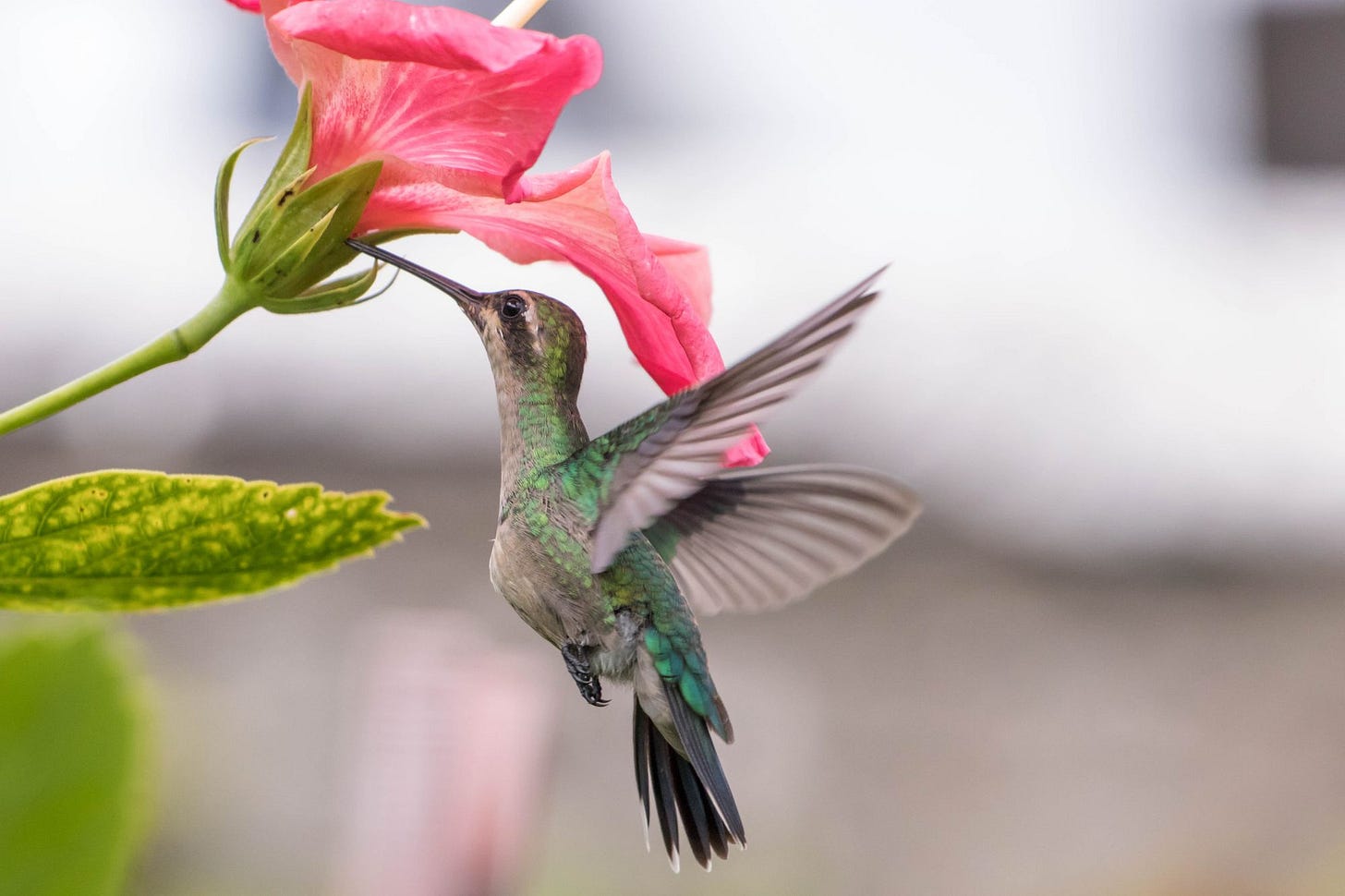
Due to the wide range of Hummingbirds, it is impossible to list plants that would work for every region. This blog is focused on California Gardens, so here is a list of good hummingbird plants to grow in the Golden State:
Beardtongue (Penstemon spp.) *
Columbine (Aquilegia spp.) *
Coral Bells (Heuchera spp.) *
Desert Willow (Chilopsis linearis) *
Flowering Maple (Abutilon spp.)
Foxglove (Digitalis spp.)
Hummingbird Sage (Salvia spathacea) *
Lion's Tail (Leonotis leonurus)
Mexican Cigar Plant (Cuphea ignea)
Pitcher Sage (Lepechinia fragrans) *
Red Fairy Duster (Calliandra californica) *
Red Hot Poker Plant (Kniphopia uvaria)
Red Yucca (Hesperaloe parviflora)
Sage (Salvia spp.) *
Tropical Hibiscus (Hibiscus rosa-sinensis)
Woolly Blue Curls (Trichostema lanatum) *
Zauschneria (Epilobium canum) *
* - California Native Plant
Water
Provide a water source in your garden. Hummingbirds need only a small amount of water to bathe and will often use the water collected on a broad leaf plant. If you have a lawn, the over-spray from sprinklers will collect on the leaves of plants, so that you do not need to replenish the water by hand. If you live in an area, where it rains a lot, simply having broad leaf plants in your garden will suffice.

Territorial Nature
Hummingbirds are rarely seen in groups because they are intensely territorial. Even when seen in groups, they will often be duking it out as they fight to remain in control of their territory. Just like cats, hummingbirds will consider your property to be their domain. Your presence is only tolerated.
Hummingbird Maps
Due to their territorial nature, Hummingbirds have an internal map of their realm. Hummingbirds remember the location of every flower in their territory and how long it takes to refill with nectar. Keeping a garden consistent, without replacing a large portion of plants every season will ensure the hummingbird feels a sense of ownership and remains a regular visitor to your garden. For this reason, the plant palette should be composed of plants that are suitable for your climate. This is another good reason to grow a native plant garden.
Safety
No bird will feed from your garden unless they feel safe. Despite their reputation as fierce warriors, Hummingbirds are no less skittish than other birds. Most birds will sit on a high perch where they are safe from ground predators, and hidden among the foliage that protects them from aerial predators. Hummingbirds are very small, often measuring less than 4" (10 cm). They are not as susceptible to aerial attack as they are hard to spot from a distance, but ground predators are still a cause for concern. Many guides for hummingbird gardens mention having trees nearby for them to use as perches from which they will survey their feeding ground before flying down to feed. While this is true, they are not completely safe in a tree as hummingbird can be attacked by Praying Mantises, spiders or tree-climbing snakes. Often they will perch on overhead cables or lighting fixtures. Try to incorporate or design around these types of fixtures where possible.
Hummingbird Feeders
Hummingbird Feeders are often used by bird-lovers to feed little flying visitors at their home. If you have a garden with space to grow hummingbird friendly plants, I do not recommend these. The reason I do not recommend them is because they put the onus on you to refill with artificial nectar. This is bad for 2 reasons. Firstly, Hummingbirds are routine in nature, so if you forget to fill the feeder, or go on vacation, they will not be able to feed. This can cause unnecessary stress for the hummingbird. Secondly, Mother nature already supplies nectar. Why increase your carbon footprint with artificial products when you could be using plants instead? Despite my reservations about feeders, these do have their place in the right context. These feeders are great for balcony gardens where you don't have the space for planting the variety of flowering plants needed to give the hummingbirds a year-round source of nectar. For the most part, hummingbirds live in areas of the New World where urban development is rapidly replacing natural habitats. Much of this development is managed by a colonial culture with little appreciation of the indigenous ecosystem in the Americas. As a result, much of the indigenous wildlife is not considered during environmental reviews of urban development.
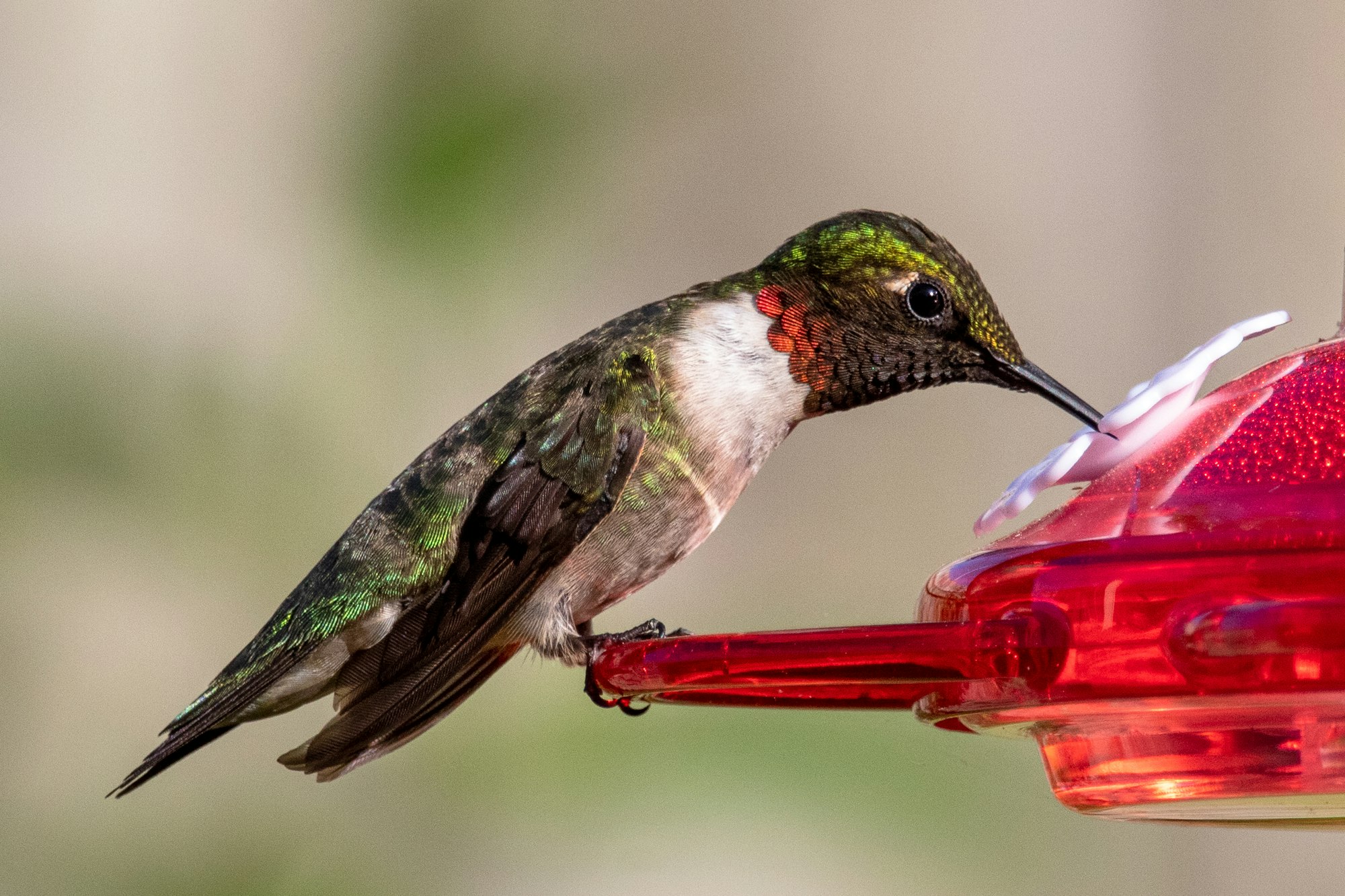
Given the rich cultural heritage hummingbirds have in the Americas, we owe it to ourselves to do whatever we can to make them feel at home on our land.


